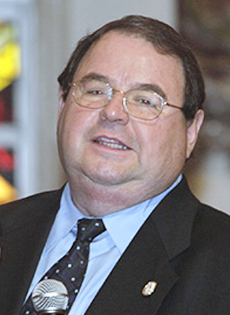
So that everyone can see it...
Monday, June 18, 2018
*Rogelio Zelada
The commotion has become uncontrollable, and Eudes de Zully, Bishop of Paris, wants to put things in their place and control the excess fervor of the faithful. They crowd and climb the side entrances of the presbytery to be able to contemplate the moment in which the priest, with his back to the assembly, lifts the host, raising it a bit over the altar, and leans over it to carefully say the words of consecration in Latin: “This is my body...” As a result, it is impossible to focus with devotion when some faithful carry ladders to overcome the height of the wall enclosing the space where Mass is celebrated and to see, at least for a few seconds, the consecrated host that the priest holds in his hands.
It is very likely that, among other things, this desire had its origin in the popular reaction that fought the heresy of Berengario, Bishop of Tours, who denied the doctrine of transubstantiation. He taught that both Christ and bread were really present in the consecrated bread. Therefore, the host could not be adored, because it would be worshipping plain bread. Something like the Lutheran doctrine which centuries later would use the terms “impanatio or cosubstantatio.”
The start of the 13th century is marked by the introduction of unleavened bread and the establishment of the custom of receiving the Body of Christ on the tongue, something that only happened occasionally with the sick. The laity gradually abandon the practice of receiving Communion. A reason for this is the newly established obligation to confess beforehand, the Eucharistic fast, and the obligation of conjugal abstinence. Communion is then replaced by the longing to see the body of the Eucharistic Lord.
In the year 1208, to facilitate the contemplation of the sacred host, Eudes de Zully prescribed to his priests, “When beginning the words of the Canon of the Mass Qui pridie and holding the host, do not raise it at once too high so that the people see it, but keep it more or less at chest level, until you say, ‘Hoc est enim corpus meum.’ Then raise it so it can be seen by all.”
The practice of elevating the host after pronouncing the narrative and words of Eucharistic institution is not biblical in origin, nor is it the tradition of the primitive community (although some artists have imaginatively painted Christ raising a host at the Last Supper). Its roots are devotional and especially pastoral. Even so, there will remain some fervent excesses and occasional shouts of, “Higher, I cannot see!” It is the time when some theologians pretentiously claimed that “Communion of the priest was sufficient and effective for all the community who are present.” With this, many felt excused from accessing Communion.
Communion with the chalice also suffers the same fate; and the raising of the cup with the Blood of Christ must wait until the 16th century when the Lateran Council, logically, establishes it.
The end of the Middle Ages begins a process where the laity become invisible, and go from being the subject of the Church to being the object. They become totally silent, mute and passive attendees who do not even appear in the formulae and liturgical texts because, from then on, only the clergy will be the official actors of the celebrations and rites in the Church.
There was no other option but to wait until the 20th century, when the Second Vatican Council reinstated the place of the laity within the ecclesial communion. The Church, incarnate presence of the Lord, would assert the words of Christ, who compares the kingdom of heaven with a father who brings out old things and novelties from a chest.
The current rite for the Communion of the Faithful seems to be inspired by the Jerusalem Catechesis, written around the year 400 of the Christian era:
“When you approach, do not advance with open palms and fingers apart, but make your left hand like a throne for your right, which is about to receive the King. And, having supped your palm, receive the Body of Christ saying, ‘Amen.’”


Comments from readers